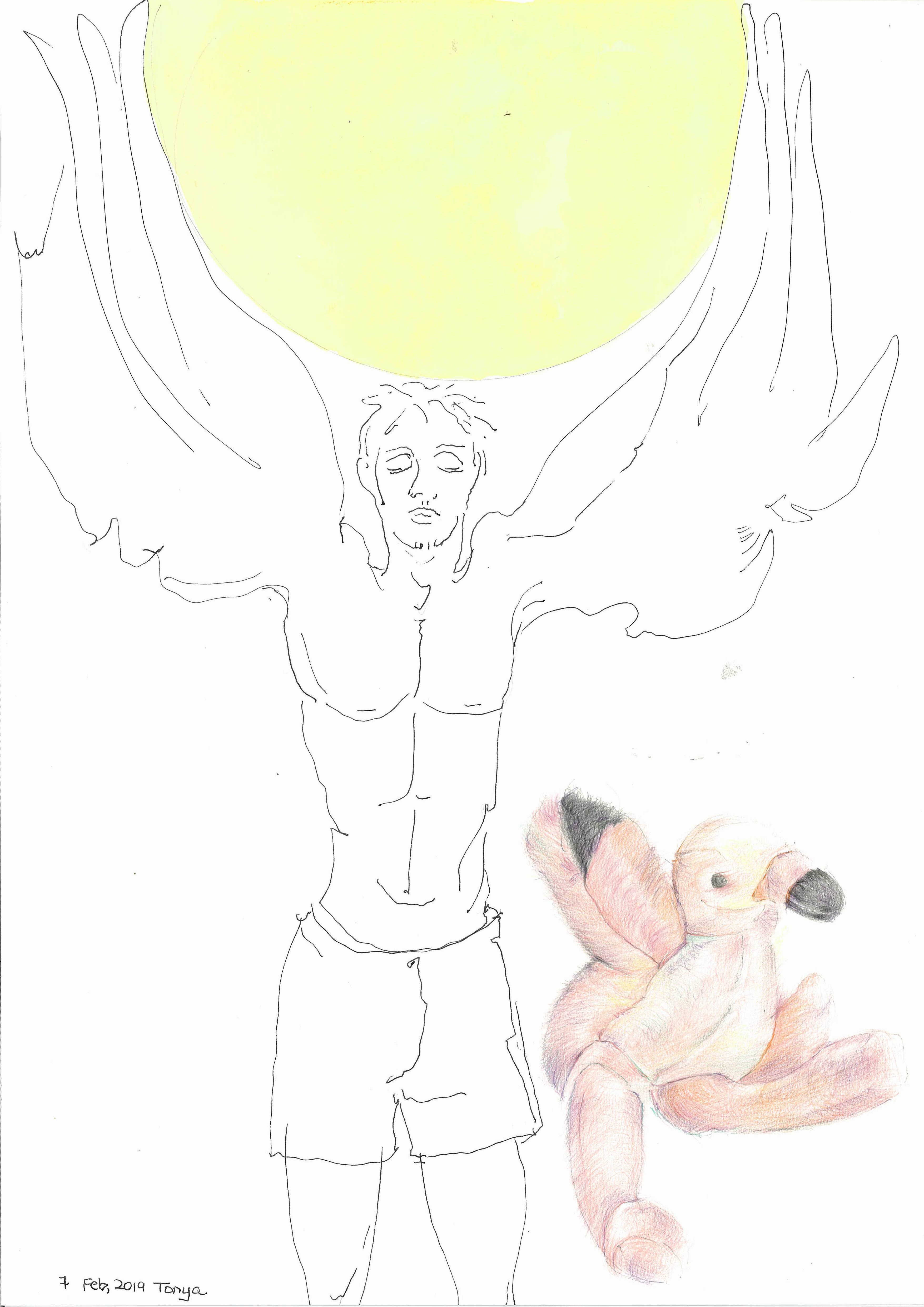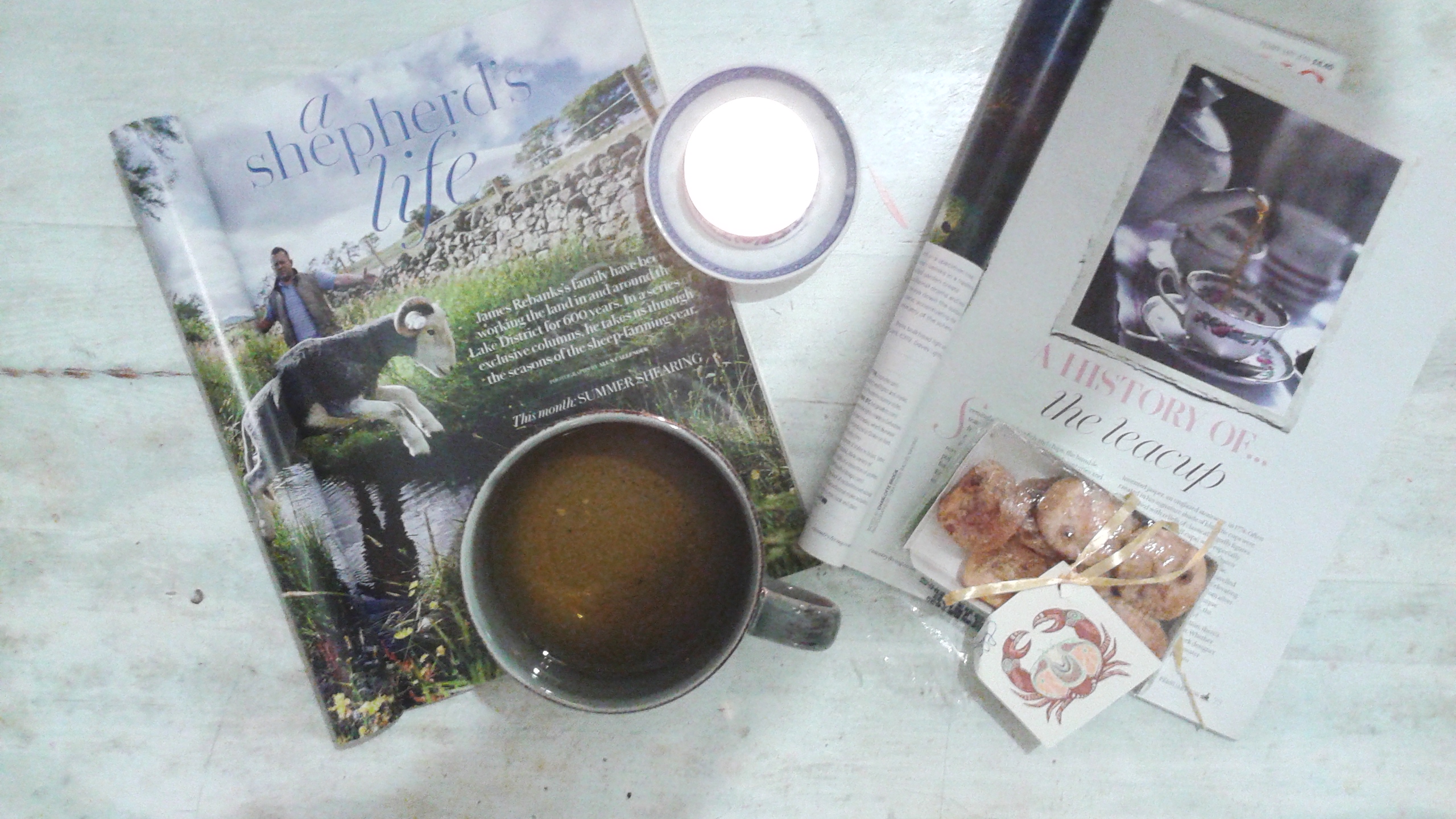Three things: art, intuition and tapping


- Today I am posting two samples of the artwork I am making at the moment, which has been waiting for over a decade in my psyche and arts supply cupboard, in the form of ideas and quick sketches in a file. To some extent I owe the fact that I have finally decided to engage with the process to my coming into contact with Seth Godin’s ideas in his book The Icarus Deception (see previous post), which brought my own carrying around the Icarus myth and relevant old lessons to the foreground, and in some sense gave me a nudge to finally turn the ideas into artwork. (The quality of the scanning may not be very good, but it’s the best I could get, even though the scanning was done by professionals in town…. because my home device is not suitable for A3 size paper)
- Making art has been a big part of my life, and has also, assisted me on this journey; however, it is not the same as art journaling, which I have also engaged with to a smaller degree. I have explored this process through engaging with it, doing an art therapy course, reading books on art therapy, and eventually, using ideas that spontaneously evolved. However, over the last year I got into the habit of trying all sorts of ideas that I found online or in my inbox without always evaluating their value or underlying intention, which very recently brought home to me how often we don’t listen to our intuition and disregard what feels right for us, and also, that one size does not fit all. So, a little while ago I was watching a video to do with art journaling. The art material required was a journal, coloring material and duct tape. It more or less involved writing all the practices, interests and activities that support and nourish us in a container and then covering it with duct tape and sort of creating zebra stripes. Then this was covered with blobs of paint in various colours. Then the duct tape was removed and more painting was applied until the positive experiences were out of sight. I noticed that I didn’t feel comfortable with the process and started wondering about the goal and underlying intention of this particular structured activity, so, I simply decided to respect my feelings and listen to the associations that were coming up. The duct tape zebra design was reminiscent of rails or a cage and the duct tape and layers of paint over the positive experiences felt like a process of silencing or pushing positive experience and processes out of sight. However, ultimately the experience proved positive because it brought home to me the importance of being present and respectful of our gut feelings or right brain processing and insights, and also, the necessity to always engage with things with our critical appreciation centres online.
- Finally, a little mention to tapping or Emotional Freedom Technique. Tapping is a powerful and easy technique, which I use, definitely not often enough. I often think that mindfulness practices and tapping should become part of the school curriculum if we are truly invested in creating more resilience, self awareness, presence and a sense of empowerment in our children. Anyway, The Tapping World Summit 2019 is on and I have been watching some of the videos. One tapping exercise I have engaged with comes from Jack Canfield. In brief, we tap on a physical pain, emotion or critical thought, which we then take further by exploring its relationship with our childhood, which allows for much deeper relief and clarity.

 Anniversaries, in general, and birthdays, in particular, can be moments when our existential anxieties and our innate human struggles with our mortality can come to the foreground. We are all, at some level of awareness, always in touch with our own and our loved ones’ non infinite physical existence and the fact that we will all die, later than sooner, if we are proactive, supported and lucky. We humans know that eventually, we will all come full circle, but this knowing is painful and so we try to defend against it through psychological defenses and various ways of coping and being. My inspiration to write about this today stems first from the obvious, I think, fact that I too am human, and therefore, I am not exempt of this type of existential angst, even if it often lies in the periphery of my awareness. I am also aware that I may defend against it through denial and repression, avoidance; busyness and distractedness. However, sometimes our death anxiety can manifest in more complex and destructive attitudes and behaviours. Another reason for my engaging with this topic is that my birthday is sort of approaching and so reflecting on my life cycle inevitably brings up cakes and cards, recent detours and ignoring my gut feelings, but mostly themes of births and endings and what goes on in between. I have also been doing things like cleaning out spice drawers and my inbox, and deciding what is irrelevant and of no value, and also, going through photo albums. Photos reveal the passing of time. I see the changes and growth, the passing away of certain people and pets, but also, a lot of love and living. Childhood photos, in general, connect me to developmental stages and I am reminded that I have always had clear memories of the period when as a child I became aware of my parents’ mortality and how I navigated it. The realization of death in childhood can occur through experiences like surgeries, accidents, trauma, bullying, death of loved ones or pets, and also, narratives and story-telling; however, we mostly don’t think of these experiences as significant. They are too distant. Robert Firestone writes ‘young children, some as early as two years old, become aware of the fact of death—for example, when a pet dies or when they learn of the passing of a relative or close family friend. Between three and six years of age, children become conscious of the fact that their mother and father are vulnerable to death (Kastenbaum, 2000)…..and that ‘regardless of when this discovery occurs, it effectively destroys the child’s illusion of self-sufficiency. Even though defenses are instituted to block the awareness of death from consciousness, children’s fears are preserved in their entirety in the unconscious. Thereafter, the suppressed fear of death continues to exert a significant influence on the personal life of the developing child and, later, the adult’.
Anniversaries, in general, and birthdays, in particular, can be moments when our existential anxieties and our innate human struggles with our mortality can come to the foreground. We are all, at some level of awareness, always in touch with our own and our loved ones’ non infinite physical existence and the fact that we will all die, later than sooner, if we are proactive, supported and lucky. We humans know that eventually, we will all come full circle, but this knowing is painful and so we try to defend against it through psychological defenses and various ways of coping and being. My inspiration to write about this today stems first from the obvious, I think, fact that I too am human, and therefore, I am not exempt of this type of existential angst, even if it often lies in the periphery of my awareness. I am also aware that I may defend against it through denial and repression, avoidance; busyness and distractedness. However, sometimes our death anxiety can manifest in more complex and destructive attitudes and behaviours. Another reason for my engaging with this topic is that my birthday is sort of approaching and so reflecting on my life cycle inevitably brings up cakes and cards, recent detours and ignoring my gut feelings, but mostly themes of births and endings and what goes on in between. I have also been doing things like cleaning out spice drawers and my inbox, and deciding what is irrelevant and of no value, and also, going through photo albums. Photos reveal the passing of time. I see the changes and growth, the passing away of certain people and pets, but also, a lot of love and living. Childhood photos, in general, connect me to developmental stages and I am reminded that I have always had clear memories of the period when as a child I became aware of my parents’ mortality and how I navigated it. The realization of death in childhood can occur through experiences like surgeries, accidents, trauma, bullying, death of loved ones or pets, and also, narratives and story-telling; however, we mostly don’t think of these experiences as significant. They are too distant. Robert Firestone writes ‘young children, some as early as two years old, become aware of the fact of death—for example, when a pet dies or when they learn of the passing of a relative or close family friend. Between three and six years of age, children become conscious of the fact that their mother and father are vulnerable to death (Kastenbaum, 2000)…..and that ‘regardless of when this discovery occurs, it effectively destroys the child’s illusion of self-sufficiency. Even though defenses are instituted to block the awareness of death from consciousness, children’s fears are preserved in their entirety in the unconscious. Thereafter, the suppressed fear of death continues to exert a significant influence on the personal life of the developing child and, later, the adult’.